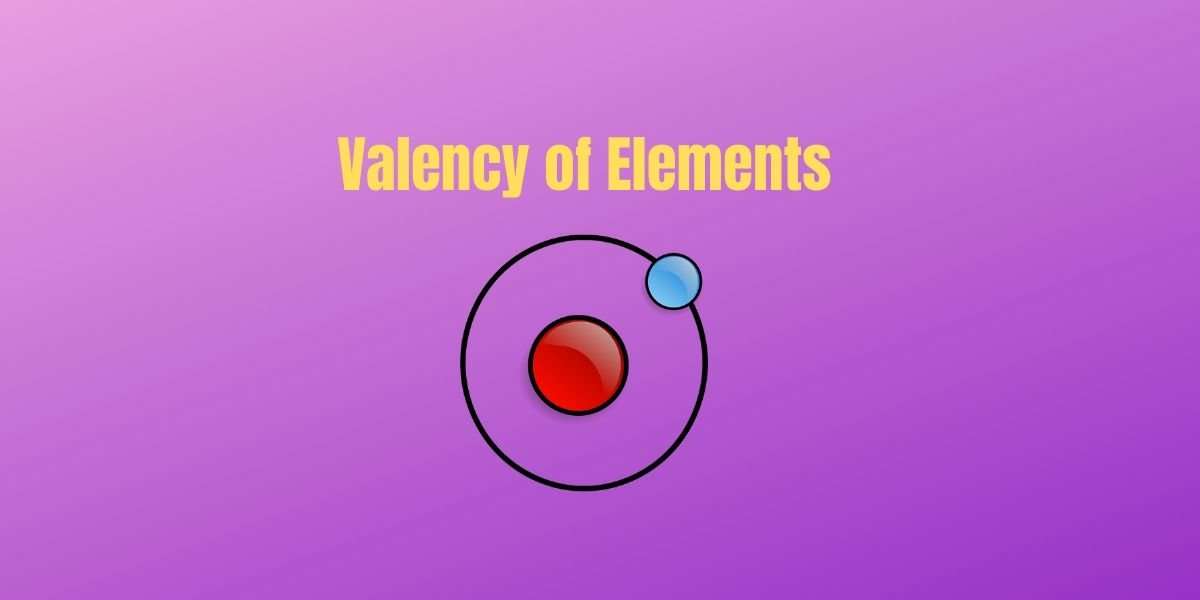Let’s start the introduction of what is Valency of elements
Contents
What is Valency?
The capacity of an atom of an element to form chemical bonds is known as its valency. It decided by the number of valence electrons in its atom.

How to find Valency ( How to calculate valency)
- The valency of a metal element is equal to the number of valence electrons in its atom.
- The valency of a non-metal element is usually equal to eight minus the number of valence electrons in its atom. There is one exception to this rule and that is the valency of hydrogen is equal to the number of valence electrons, which is 1 through hydrogen is a nonmetal element.
Types of Valency
There are two types of valency:
- Electrovalency
- Covalency
Electrovalency
The number of electrons lost or gained by one atom of the element to achieve the nearest inert gas electron configuration is called its electrovalency.
Ex: Magnesium – one magnesium atom loses 2 electrons to achieve the inert gas electron configuration, therefore, the valency of magnesium is 2(or +2).
Ex: Oxygen – one atom of oxygen requires 2 electrons to achieve the nearest inert gas electron arrangement, so the electrovalency of oxygen is 2( or minus 2).
Covalency
The number of electrons shared by one atom of an element to achieve the nearest inert gas electron configuration is called covalency.
Example:
- Covalency of Hydrogen: one atom of hydrogen shares 1 electron to achieve the nearest inert gas electron configuration, therefore, the covalency of hydrogen is 1.
- Covalency of nitrogen: one atom of nitrogen shares 3 electrons to achieve the nearest inert gas electronic configuration, therefore, the covalency of nitrogen is 3.
Valency of first 20 elements in tabular form
| ELEMENT | Electronic configuration | Valency |
| 1. Hydrogen | 1 | -1,+1 |
| 2. Helium | 2 | 0 |
| 3. Lithium | 2,1 | +1 |
| 4. Beryllium | 2,2 | +2 |
| 5. Boron | 2,3 | + 3,-3 |
| 6. Carbon | 2,4 | +2,+4 |
| 7. Nitrogen | 2,5 | -3,-2,-1,+1, +2,+3,+4,+5 |
| 8. Oxygen | 2,6 | -2 |
| 9. Fluorine | 2,7 | -1,+1 |
| 10. Neon | 2,8 | 0 |
| 11. Sodium | 2,8,1 | +1 |
| 12. Magnesium | 2,8,2 | +2 |
| 13. Aluminium | 2,8,3 | +3 |
| 14. Silicon | 2,8,4 | -2,+2,+ 4 |
| 15. Phosphorus | 2,8,5 | – 3,+1,+3,+5 |
| 16. Sulphur | 2,8,6 | -2,+2,+4,+6 |
| 17. Chlorine | 2,8,7 | -1,+1,+2,+3, +4,+5,+7 |
| 18. Argon | 2,8,8 | 0 |
| 19. Potassium | 2,8,8,1 | +1 |
| 20. Calcium | 2,8,8,2 | +2 |
Electronic Configuration
The arrangement of electrons in the various shells of an atom of the element is called electronic configuration. The maximum electrons which can be accommodated in K shell are 2, for L shell is 8, for M shell is 18 and for N shell is 32.
Valence Electrons
The electrons present in the outermost shell of an atom are called valence electrons. A valence electron is also called valency electron.
Cause of Chemical Combination
The atoms combine with each one another to achieve the inert gas electron arrangement and become more stable. An atom can achieve the noble gas(or inert gas) electron arrangement in three ways:
- By losing one or more electrons
- By gaining one or more electrons
- By sharing one or more electrons
I hope you like this artile “what is valency?”.
